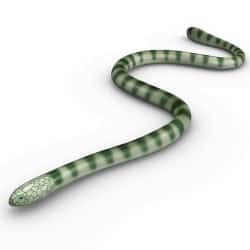Mammals And Bird Have An Edge Over Reptiles When It Comes To Adapting To Climate Change

As climate change continues to affect the planet it would seem that warm-blooded animals may have an edge when it comes to adaptation to the new reality. According to the latest research, over the last few million years of Earth’s history, birds and mammals have been able to better adapt to changing temperatures than amphibians and reptiles by shifting their habitats to more suitable locations. The study examined data on over 11,000 species of vertebrate as well as fossil records dating back 270 million years.
Reptiles and amphibians are slower to adapt
When the records were compared with ancient temperature models, the researchers found that warm-blooded species were better able to expand their ranges and adapt to new climate conditions. Such shifts in reptiles and amphibians occurred at a much slower pace. Scientists say this fact could have a huge impact on extinction rates and how our world will look in the future. There are a number of reasons why warm-blooded species have been historically more successful at adaptation. Birds and mammals regulate their own body temperatures in contrast to cold-blooded species. This means there is no need to adjust how they behave in response to the temperature as dramatically as cold-blooded species must.
Regulating your own body temperature is a huge advantage
For example, reptiles and amphibians are forced to significantly scale back their activities when temperatures drop which means they are at a disadvantage when it comes to mating, finding food or seeking new habitats. Warm-blooded species can use their own body heat to maintain the temperature of developing babies whilst cold-blooded species are forced to remain in suitable climate conditions for their eggs to develop and hatch. Therefore, it is not surprising that birds and mammals are able to disperse around the world when the Earth goes through cooling periods.
Global warming will be a problem for cold-blooded species as well
Some scientists however have come to believe that the current rapid global warming we are experiencing may also have disproportionate effects on cold-blooded species as well. One study which looked at lizard extinction rates in relation to changing conditions in the climate suggests that 20 per cent of all lizard species globally could simply become extinct by 2080. Locally the extinction rate could reach as high as 40 per cent of species.
All species have temperature limits
It is easy to assume that snakes and lizards are happy to bask in warm weather, reptiles like all species have their own temperature limits. As the Earth’s temperature continues to rise, some places may simply become to hot for cold-blooded residents and as has been pointed out, historically these species have found it more difficult to migrate into more suitable habitat when compared to warm-blooded animals.



